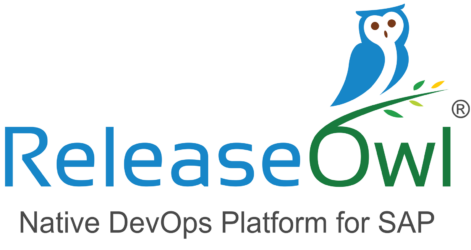SAP T Code
Filter By
Browse By
- SAP Analytics and AI
- SAP Application Development and Integration
- All SAP Application Development and Integration
- SAP ABAP
- SAP ABAP Development Tools
- SAP ABAP Test Cockpit
- SAP API Management
- SAP BAPI
- SAP Basis
- SAP BRF
- SAP Business Application Studio
- SAP CMS
- SAP Design Studio
- SAP Development Tools
- SAP DevOps
- SAP EAI
- SAP EDI
- SAP Extension Suite
- SAP Fiori
- SAP Fiori Elements
- SAP Integration Suite
- SAP Low Code Application Development
- SAP Low Code Automation
- SAP Netweaver
- SAP Release Management
- SAP UI5
- SAP Web Application Server
- SAP Web IDE
- SAP Business Process Management
- SAP Center of Excellence
- SAP CIO
- SAP Customer Experience
- SAP Data and Data Management
- All SAP Data and Data Management
- SAP BW
- SAP BW/4HANA
- SAP Crystal Reports
- SAP Data Archiving
- SAP Data Center
- SAP Data Governance
- SAP Data Integration
- SAP Data Migration
- SAP Data Quality
- SAP Data Services
- SAP Data Strategy
- SAP Data Visualization
- SAP Data Warehouse Cloud
- SAP DMS
- SAP Document Control
- SAP EIM
- SAP ETL
- SAP ETL Tools
- SAP HANA
- SAP HANA Administration
- SAP HANA Deployment Infrastructure
- SAP HANA Studio
- SAP Master Data
- SAP Master Data Governance
- SAP MDM
- SAP Enterprise Architect
- SAP Enterprise Asset Management
- SAP ERP
- SAP Finance
- All SAP Finance
- SAP Accounting
- SAP AR AP
- SAP Asset Accounting
- SAP Billing Systems
- SAP BPC
- SAP BRIM
- SAP Cash Management
- SAP Central Finance
- SAP Controlling
- SAP COPA
- SAP Cost Center Accounting
- SAP Currency Risk
- SAP e-invoicing
- SAP FICO
- SAP Finance Automation
- SAP Advanced Financial Closing
- SAP Financial Consolidation
- SAP Financial Planning
- SAP FX Risk
- SAP General Ledger
- SAP Global Tax Management
- SAP Hyperion
- SAP Order to Cash
- SAP Payment Processing
- SAP Profitability Analysis
- SAP Rebate Management
- SAP S/4HANA Finance
- SAP SWIFT Compliance
- SAP Treasury Management
- SAP Universal Journal
- SAP Governance Risk and Compliance
- SAP Human Capital Management
- SAP Intelligent Technologies
- SAP Platform and Technology
- All SAP Platform and Technology
- SAP Business Technology Platform
- SAP Cloud
- SAP Cloud Connector
- SAP Cloud Integration Platform
- SAP Cloud Migration
- SAP Cloud Platform
- SAP Cloud Providers
- SAP Cloud Strategy
- SAP Digital Signature
- SAP Container Platform
- SAP HANA Enterprise Cloud
- SAP Digital Asset Management
- SAP Smart Forms
- SAP HEC
- SAP Digital Integration Hub
- SAP Hyperscalers
- SAP Infrastructure
- SAP Messaging
- SAP Quality and Testing
- SAP Security
- SAP Spend Management
- SAP Supply Chain Management
- All SAP Supply Chain Management
- SAP APO
- SAP Asset Management
- SAP Business Network
- SAP Digital Manufacturing Cloud
- SAP Digital Twin
- SAP EWM
- SAP IBP
- SAP Inventory Management
- SAP Label Printing
- SAP Logistics
- SAP Manufacturing
- SAP Manufacturing Automation
- SAP MES
- SAP MII
- SAP MM
- SAP MRO
- SAP MRP
- SAP Order Management
- SAP Plant Maintenance
- SAP PLM
- SAP Production Planning
- SAP S&OP
- SAP SD
- SAP SPM
- SAP Supply Chain Planning
- SAP Track and Trace
- SAP Transportation Management
- SAP System Administration
What Are SAP T-Codes?
An SAP transaction code (T-Code) is a four-character shortcut that is used to access a transaction within an SAP system or application. Transaction codes provide direct access to the desired transaction from anywhere within the SAP system. Instead of using the menu or another means of accessing the transaction, you can start a function in a single step using an SAP T-Code. T-Codes can provide access to everything from user maintenance or authorization, workflow management, accessing SAP ABAP tables and dictionaries, running SQL queries, or transaction control. Every function in an SAP ERP system has a T-code associated with it. There are thousands of transaction codes available in different SAP systems and applications.
What Are SAP T-Codes?
An SAP transaction code (T-Code) is a four-character shortcut that is used to access a transaction within an SAP system or application. Transaction codes provide direct access to the desired transaction from anywhere within the SAP system. Instead of using the menu or another means of accessing the transaction, you can start a function in a single step using an SAP T-Code. T-Codes can provide access to everything from user maintenance or authorization, workflow management, accessing SAP ABAP tables and dictionaries, running SQL queries, or transaction control. Every function in an SAP ERP system has a T-code associated with it. There are thousands of transaction codes available in different SAP systems and applications.
Use of T-Code is performed by logging onto the SAP application using the SAP GUI or SAP Front End, placing the cursor in the SAP command field, typing the transaction code, then pressing enter. Depending on the role that a user plays within an organization, they will have different T-codes that are important to them. Administrators may focus on transactions related to that topic, while developers may use those connected to ABAP or SQL queries. Business users may use T-codes that relate to processing their daily tasks. Users can add T-codes that they use most frequently to a favorites list that allows them to access them more readily. SAP systems also provide the capability for users to create custom SAP T-codes by using the transaction SE91.
Key Considerations for SAPinsiders
- If you’re moving to SAP S/4HANA and rely on transaction codes, then you need to determine what has changed. SAP has changed a number of things with the SAP S/4HANA release, and one of them is the T-codes that are available. This event session by Arghadip Kar walks through how to find which transaction codes have been deleted or placed in SAP S/4HANA that were available in SAP ECC. It also helps organizations that are planning for the move to SAP S/4HANA to plan around customizations in their existing system that may use decommissioned transaction codes.
- You can map standard transaction codes to common phrases to make them easier to use and remember. A functionality that SAP provides is that of creating custom T-codes. But many users struggle with remembering the names of transaction codes despite the regularity of working with them. This article by Muhammad Ramzan walks through mapping standard transaction codes to common phrases to make them easier to remember, and easier to access from custom code. Following this approach ensures that authorization checks are not bypassed, and the authorizations to the actual transactions remain intact.
478 results
-

 Premium
Premium
End Language Compatibility Problems with Unicode
Reading time: 72 mins
To be a globally competitive company, you need rapid access to critical data in a wide variety of formats and languages. Learn how Unicode makes this possible in your SAP ERP system, and gain an understanding of its technical requirements and restrictions. Key Concept In the past, hundreds of different and sometimes conflicting encoding systems...…
-

 Premium
Premium
Automatically Create Dispute Cases for Customer Payments Received Through the Lockbox
Reading time: 19 mins
Learn the requisite configuration, master data setup, and transactions to enhance automation of creating a dispute case for lockbox data processed for incoming payments from customers. Key Concept Reason codes are keys that explain the difference between invoice amount and payment amount. The dispute case is the central object in SAP Collections and Dispute Management....…
-

 Premium
Premium
Integrating SuccessFactors Employee Central with SAP ERP HCM Master Data
Reading time: 21 mins
Learn how to integrate SuccessFactors Employee Central with your SAP ERP HCM system. After the successful integration, Employee Central becomes the system of record for master data and any changes to master data in Employee Central can be copied to the SAP ERP HCM system using iFlows. Key Concept For integration between the SuccessFactors and...…
-
-

 Premium
Premium
The VAT Rate Changes: A Checklist
Reading time: 17 mins
Every now and then existing VAT rates are changed. Therefore, from a certain point in time a new percentage is to be applied for a VAT code. For example, in the Netherlands in October 2012 the high rate changed from 19 percent to 21 percent. Use this checklist of the most common activities you need...…
-

- SAP Payment Processing
 Premium
Premium
Uses of the Treasury Payment Program
Reading time: 25 mins
Learn about the different types of payments that can be made through SAP’s Treasury payment program. Key Concept Treasury departments execute various types of payments, such as bank account transfers, trade-related payments, and one-off payments. These types of payments can be made by a treasury department using SAP’s Treasury payment program (formally named the Payment...…
-

Secure Your ABAP Code Against Attack
Reading time: 12 mins
As new business needs arise, organizations often develop custom code to extend the functionality of their business software. Unfortunately, custom code can sometimes lead to unforeseen risks, including code vulnerabilities that leave your systems open to damaging cyberattacks. SAP NetWeaver Application Server, add-on for code vulnerability analysis helps you mitigate these risks by identifying vulnerabilities…
-

 Premium
Premium
Don’t Wait Until After Go-Live to Set Up Cross-Company Code Controlling
Reading time: 16 mins
A wrong decision during the setup of your organizational structure can lead to a loss of functionality in logistics and controlling. You can avoid a costly reorganization of your database with cross-company code controlling. Hear about the pros and cons and learn the prerequisites for its configuration. Key Concept Organizational structure design is one of...…
-
-

 Premium
Premium
A Guide to Making Bank-to-Bank Payments Using Repetitive Codes
Reading time: 12 mins
In SAP ERP Central Component most companies use transaction F110 to make payments from their SAP system. This transaction selects open customer and vendor items that are due before the next payment run is made. This program cannot be used to make bank transfers that are not based on customer and vendor open items. For...…
-

 Premium
Premium
Improve and Simplify Your Transformations by Using ABAP Objects
Reading time: 14 mins
Learn how to use ABAP Objects to improve your business code within transformations. This leads to reduced costs, accelerated delivery, and increased quality. Key Concept ABAP Objects is an object-oriented programming extension of the ABAP language. It can be used to simplify applications and make them easier to develop. Most, if not all, new functionality...…
-

 Premium
Premium
Streamline Cross-Company Postings Using SAP Parallel Valuation and Transfer Pricing in an LIV Process
Reading time: 37 mins
Learn how to implement SAP transfer pricing and parallel valuation in goods receipt and an accounts payable Logistics Invoice Verification (LIV) process. Key Concept Parallel valuation in an SAP system helps an organization with multiple legal entities or company codes to prepare for consolidation. Multinational companies can use transfer prices in their cross-company transactions through...…
Become a Member
Unlimited access to thousands of resources for SAP-specific expertise that can only be found here.
Become a Partner
Access exclusive SAP insights, expert marketing strategies, and high-value services including research reports, webinars, and buyers' guides, all designed to boost your campaign ROI by up to 50% within the SAP ecosystem.
Upcoming Events
-

Mastering SAP Collaborate, an SAP TechEd on Tour event
November 12 - 14, 2025
Sydney, New South Wales
Australia
View Event
Related Vendors
Your request has been successfully sent

